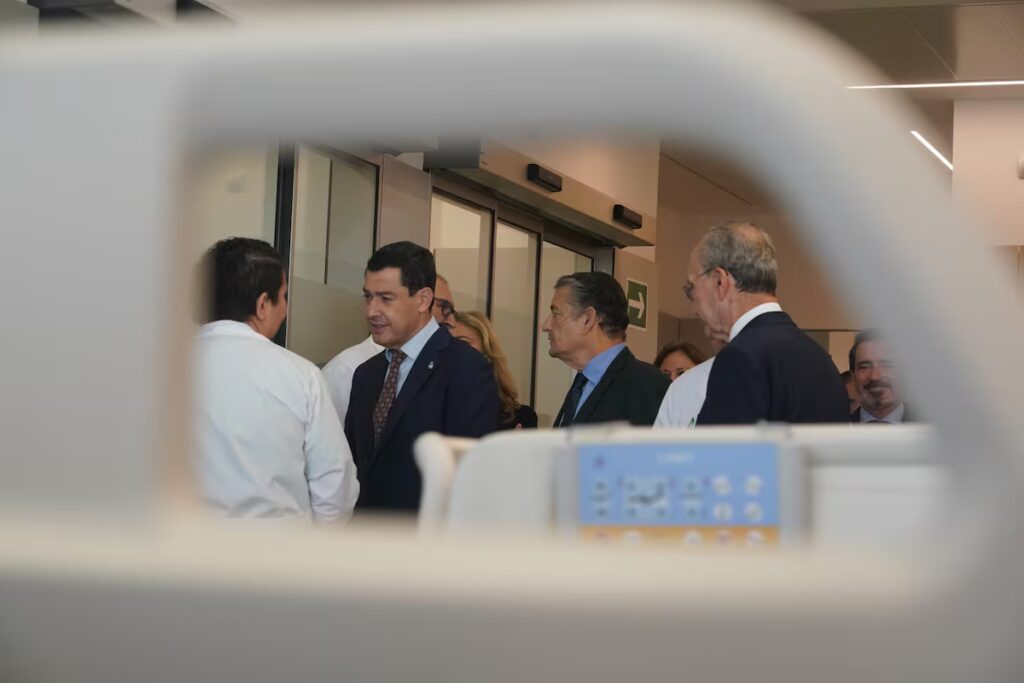
It took Andalusia practically double the time compared to the rest of the autonomous communities capable of doing so to use an innovative CAR-T therapy that manages to extend the lives of patients suffering from multiple myeloma, a type of cancer that originates in the plasma cells of the bone marrow, by years. This was revealed by an investigation by EL PAÍS, which reconstructed the story landing of Carvykti in Spain through official documents, questions to the autonomous communities and a dozen health sources.
The treatment was incorporated into public health last April, although its administration requires about two months of work due to the complexity of manufacturing it using the patient’s own cells. The first public hospitals to administer it, therefore, did so in June. In July there were already half a dozen, but in Andalusia the therapy only arrived in September, two or three months later than in the rest of the communities.
The delay is even more evident if we take into account that the Virgen del Rocío Hospital in Seville is historically a leader in the research and use of CAR-Ts and, as such, was chosen as the first in Andalusia to administer Carvykti.
This information confirms the warning messages launched in three reports by José Antonio Pérez Simón, head of the hospital’s hematology service. In the documents, published by this newspaper on November 12 and which included 23 patients, the doctor and researcher warned his superiors that at least 13 of them were experiencing “delays” in receiving the drug and that their “survival” was shortening.
Carvykti, from the pharmaceutical company Janssen, is a CAR-T, a type of therapy that involves removing T cells from the patient’s immune system and reprogram them in the laboratory so they can identify and kill cancer cells when they are reinfused into the body.
The Interministerial Commission on the Price of Medicines (CIPM) decided on February 26 to incorporate the therapy into public healthcare starting from April 1. It is indicated for patients “with relapsed and refractory (resistant) multiple myeloma who have received at least one prior treatment,” according to the meeting minutes.
This type of cancer, according to a report from the Ministry of Health, is still considered incurable, although patients enjoy long periods of remission with a good quality of life thanks to therapeutic advances. Data from clinical trials and real-world data once the therapy is commercialized shows that half of patients with previous treatment failures remain disease-free three years after receiving Carvykti. Historically, average survival in this group has been less than one year.
Once public funding was approved, the public health system set to work to administer the drug as quickly as possible to patients who needed it. The Ministry of Health has 29 accredited hospitals capable of administering CAR-T therapies against multiple myeloma, although in these early stages only a small group, those with the most clinical and research experience, are taking the lead..
Here selection The pharmaceutical company Janssen also participates, which enters into complex negotiations with each health center to establish the conditions – processes, technology, payment… – surrounding the use of the therapy. The procedure ends with the signing of confidential contracts, which largely prevent us from knowing how innovative therapies are used in the public health system.
According to information gathered by EL PAÍS, a patient from Salamanca hospital was the first in Spain to receive Carvykti outside of clinical trials in early June. Although this health center is not located in one of the most populated communities, it is one of the references for hematology in Spain, with a long history in research programs and clinical trials.
The two months that elapsed between Carvykti’s incorporation into public healthcare and the first “infusion” of the therapy were due to manufacturing. “The treatment process includes apheresis (extraction of T cells), their shipping and processing, preconditioning, cryopreservation (freezing and preservation of cells), pharmaceutical validation and, finally, administration. Furthermore, in the days before the infusion, the patient receives chemotherapy to reduce the tumor burden. The entire circuit takes a period of five to seven weeks,” a spokesperson for the Catalan Institute of Oncology (ICO) explains in writing.
Madrid’s Doce de Octubre Hospital was the second to administer Carvykti. The date of the infusion was June 10, the date from which the process began so that the therapy could be available in other accredited centers in the Community of Madrid, according to a spokesperson.
Since then, according to a pace marked by the evolution of patients and the negotiations with Janssen, the other most important hospitals have also started to resort to the therapy, according to the centers themselves and other sources consulted. The ICO – which has two accredited locations, one in Badalona and the other in L’Hospitalet – was launched on 6 July. The Marquis of Valdecilla, in Cantabria, already at the end of the month. La Vall d’Hebron in Barcelona, in the second half of July. La Fe Hospital, in Valencia, at the end of July. And the hospital in Donostia, in the Basque Country, on the 29th.
Surprisingly, it took the Virgen del Rocío another two months to administer the first Carvykti. María del Valle García, director of the Andalusian Health Service (SAS), responded in writing in an October 10 Transparency Resolution that “the first patient to receive a commercial CAR-T for myeloma underwent an infusion in September.”
Since Virgen del Rocío, other hospitals in less populated communities have joined the list of hospitals offering the new therapy. The first patient to receive it from the Virgen de la Arrixaca in Murcia, for example, did so on 6 October.
With this information, Pérez Simón’s words in the last of his three reports, in which he expressed greater urgency to his superiors for Carvykti to reach patients, make more sense. The document is dated August 6, when the doctor learned that the therapy was already in use in Salamanca, Madrid, Santander, Valencia and San Sebastián.
Among many other expressions in his reports, Pérez Simón warns that the “delays” are causing a patient to have “a decrease in disease-free survival expectations of approximately 20% in the first two years.” In another, delay “presents a very high risk of not being able to control the progression of high-risk multiple myeloma.” And in a third, this specialist regretted that the delay could lead to the patient “losing the opportunity to receive (treatment) due to clinical deterioration” due to myeloma progression.
Despite all this data, the Junta de Andalucía maintains that “it cannot be said that there was an unjustified delay” and attributes the incident to the “clinical and administrative process adequate to the legislation, evidence and patient safety”.
“From the Andalusian Health Service we wish to clarify that the administration of Carvykti in Andalusia was carried out in accordance with the clinical indication of each patient and following the same safety and preparation criteria as the rest of the National Health System”, states the regional Government in the response sent to this newspaper.
The implementation of an innovative therapy like Carvykti is a dynamic process in which referrals between centers and communities play a key role. They are the ones who allow patients who live in areas served by hospitals that do not offer the therapy – or are still starting to do so – to be transferred to others to receive it. This is what happens, for example, in Aragon or Galicia, which direct their patients to Barcelona and Salamanca respectively while their centers complete the procedures.
“The problem with Virgen del Rocío is that it is not a hospital that historically refers patients waiting for CAR-T therapies to others, on the contrary. The center serves patients from all over Andalusia and also from neighboring communities, such as Extremadura. So a delay in the hospital has an impact that goes far beyond the target population it serves in Seville,” concludes a public health official in Andalusia.





